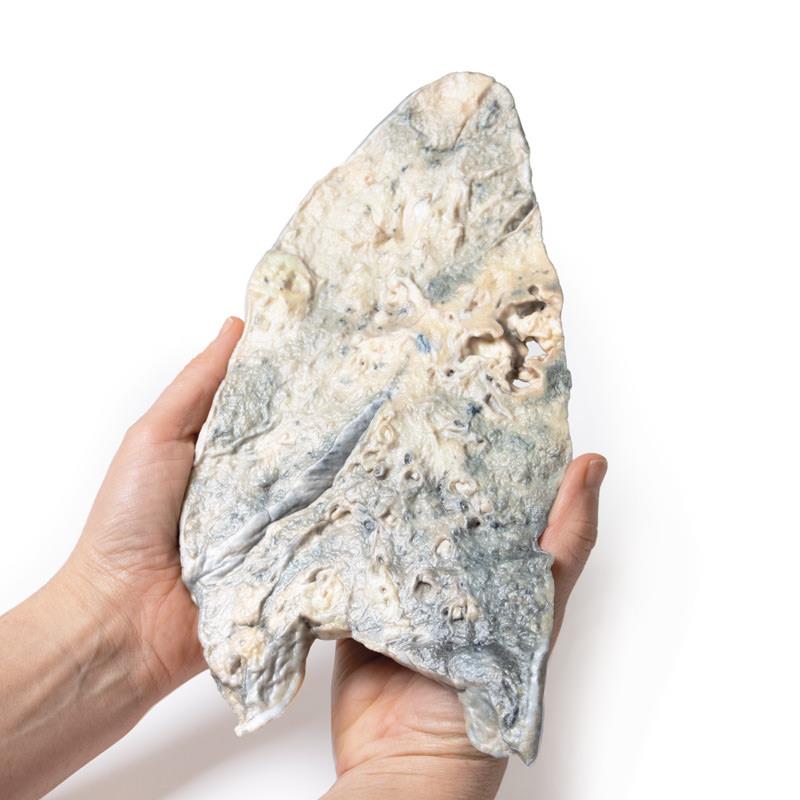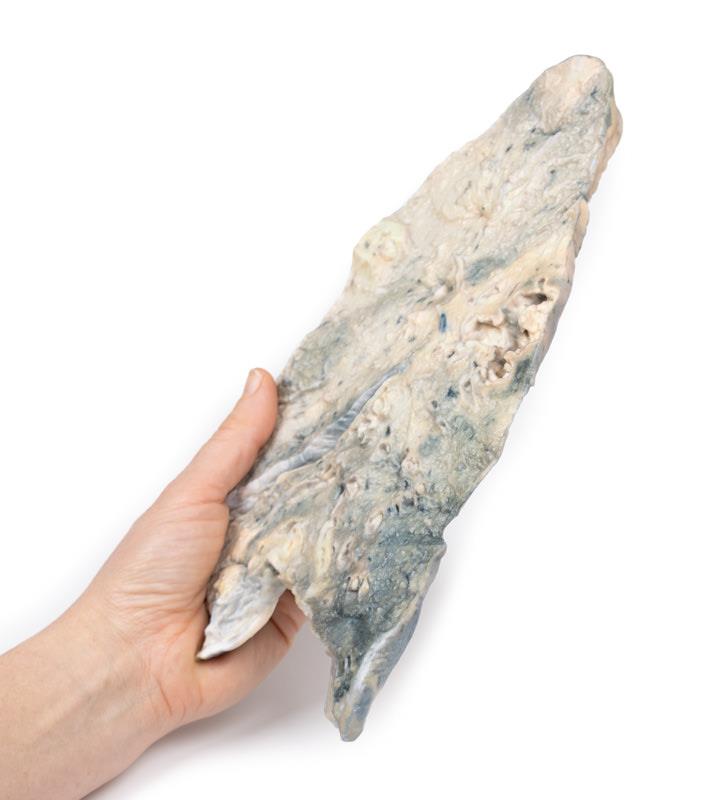Description
Clinical History
A 55-year old female presents with severe dyspnoea, a productive cough and oral candidiasis. She is immunosuppressed with a history of rheumatoid arthritis being treated with steroids and cyclophosphamide. Sputum cultures grew staphylococcus aureus. She was commenced on appropriate therapy but died shortly after admission.
Pathology
The right lung has been bisected. There are multiple irregular abscess cavities visible. The largest of these, in the apex of the lower lobe, measures 4 x 3 cm in diameter. At the apex of the upper lobe, there is another irregular abscess cavity which is less obvious, approximately 3 x 2 cm in diameter surrounded by a zone of consolidation. A number of small abscesses are also seen. Patchy consolidation is present in the middle lobe. Numerous bronchi contain and are obstructed by plugs of pus. Cultures taken from the specimen grew Staph. aureus. This is an example of multiple Staphylococcal lung abscesses in an immunosuppressed patient.
Further Information
Staphylococcus aureus is a gram-positive coccus. It is part of the microbiota of the human body usually found on the skin or upper respiratory tract. It is usually commensal but may cause opportunistic infections such as skin infections commonly or less frequently, pneumonia and endocarditis. It can cause both community and hospital-acquired pneumonia. Hospital-acquired Staph pneumonia is most commonly associated with intubation and prolonged admissions. Prevalence of hospital acquired pneumonia caused by Methicillin-Resistant Staph Aureus (MRSA) is increasing.
It is an important cause of secondary bacterial pneumonia in patients following viral respiratory infection e.g. post influenza infection. Intravenous drug users have an increased risk of developing ‘metastatic’ Staph. aureus pneumonia and endocarditis, as a result of staph bacteraemia caused by the use of dirty needles. Staph. aureus pneumonia is severe and associated with an increased rate of complications, such as ca vitating abscess formation and empyema.
Staph Aureus pneumonia should be suspected in any of the high-risk groups above as well as patients with pneumonia with rapid deterioration, haemoptysis, early multilobar pneumonia on X-ray, pulmonary cavitation or disseminated intravascular coagulation. First line treatment for Staph. aureus pneumonia is penicillin antibiotics, such as flucloxacillin. Staph aureus resistance to penicillin is very common with penicillinase production e.g MRSA. MRSA is treated with glycopeptide antibiotics, such as vancomycin, or oxazolidinone antibiotics, such as linezolid.




